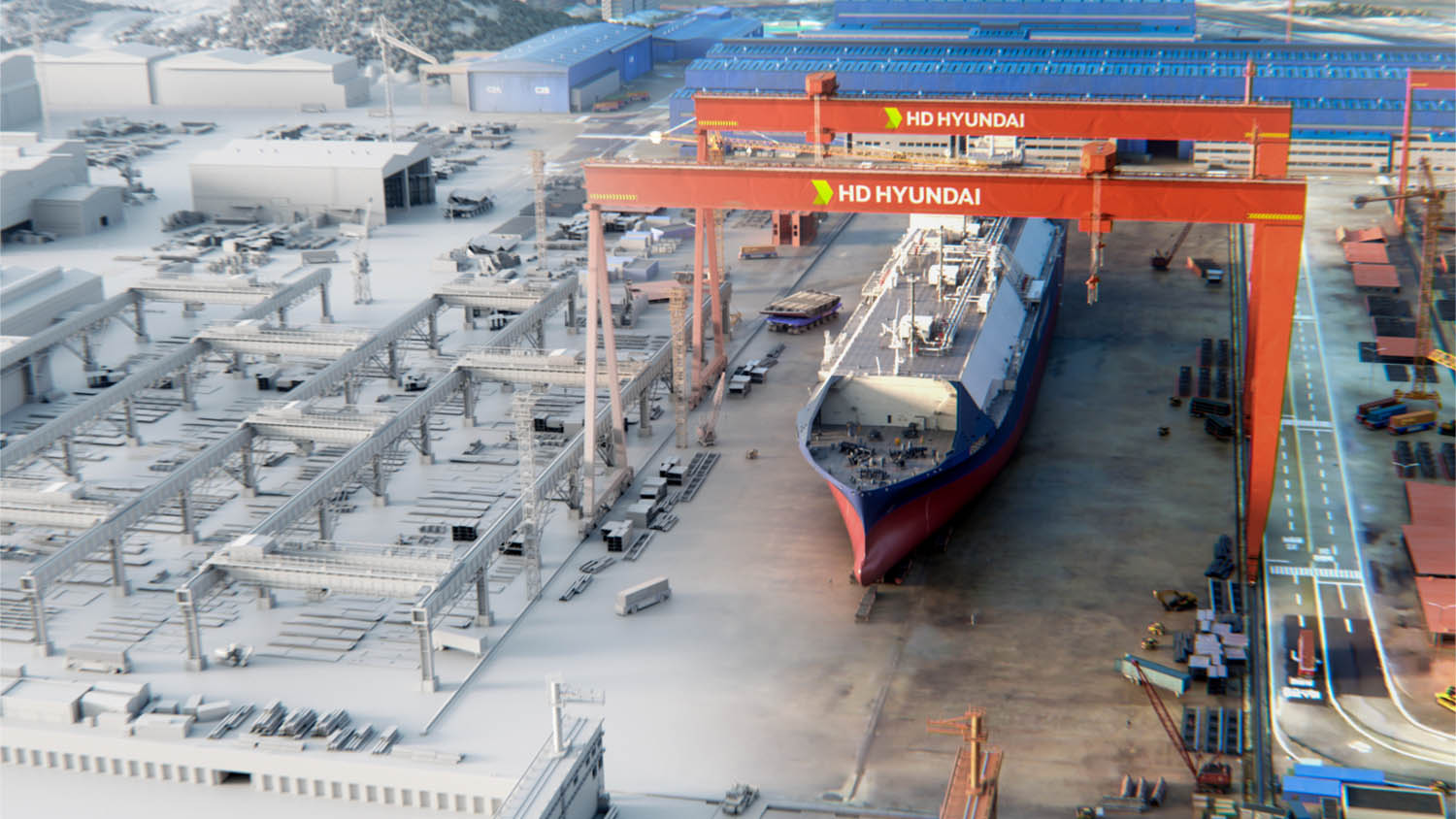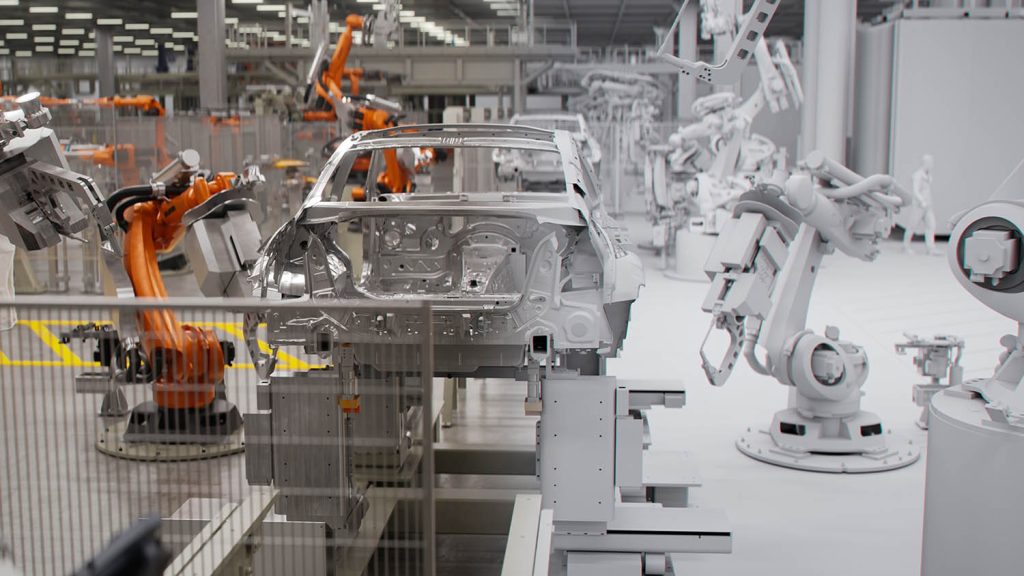Nvidia is extending the reach of Omniverse with new Cloud APIs that put visualsation and simulation into the hands of many more users, writes Greg Corke
Nvidia Omniverse has been instrumental in bringing USD, the 3D scene description originally developed by Pixar for content creation and interoperability between tools, into the world of design and manufacturing.
Since its launch in 2020, Omniverse has had a significant impact in industrial digital twins. Firms including BMW are using the platform for virtual factory planning, to optimise layouts, and simulate robotics and logistics systems before production starts. BMW is also connecting domain-specific software tools for multi-user live collaboration across locations, on any device.
Omniverse is not just for simulation and collaboration, however. It provides a powerful environment for visualisation. Powered by Nvidia RTX GPUs on desktop or in the cloud, design and manufacturing firms have ready access to technologies including real time ray tracing for photorealistic rendering, and one click VR/AR.
The Cloud attraction
In product development, many firms have established workflows for Product Lifecycle Management (PLM) or Product Data Management (PDM). The CAD software developers also have long-term strategies to move their customers to their respective cloud platforms. Autodesk has Fusion, Solidworks has the 3DExperience Platform. There are several others.
Each platform is not just about centralising data; it’s about building optimised collaborative workflows around that data and, in the future, using AI to obtain valuable insights from that data.
Of course, software developers ideally want customers to remain in their platform as long as possible. Furthermore, manufacturing firms don’t necessarily want to build workflows around multiple platforms or tech stacks.
To some extent, Omniverse pushes against this. In order for Nvidia to play a bigger role as these cloud platforms grow in stature, the company recently released a series of Omniverse Cloud APIs, coming first to Microsoft Azure.
Rather than making Omniverse the centre of everything, Nvidia is enabling software developers to integrate key Omniverse technologies into their respective platforms. It means their users can continue to work in a familiar environment, workflows remain the same, and data is stored in one central repository.
In its simplest form, software developers can embed Omniverse-powered viewports into their platforms, delivering ‘instant’ real-time physically based rendering – processed on GPUs in the cloud with pixels streamed to a client device. Software developers can also use the APIs to connect Generative AI tools into their existing apps, as well as a range of workflow tools for OpenUSD data.
Several software developers have already come on board with Omniverse Cloud APIs, including Ansys, Cadence, Dassault Systèmes, Hexagon, Microsoft, Rockwell Automation, Siemens, and Trimble. Some Omniverse API developments are at a more advanced stage than others, and details are still thin on the ground. DEVELOP3D caught up Siemens to find out more.

Making visualisation pervasive
Siemens has been working closely with Nvidia on Omniverse for a couple of years now, so it’s no surprise to see the company embracing the new Cloud APIs.
Siemens is starting with Teamcenter X, offering Omniverse RTX rendering directly inside the cloudbased PLM platform, so users can visualise massive engineering datasets, interactively and photo-realistically with real time ray tracing.
At Nvidia’s GTC event in March 2024, Siemens gave a demonstration of a colossal 7-million-part ship model from HD Hyundai, visualised in real time, powered by GPUs in the cloud. The demo also showed the use of Generative AI, using text prompts, such as ‘atlantic ocean waves, remote photography, ocean, sea, morning sky’ to generate 3D objects or HDRi backgrounds to visualise the model in context.
The interesting takeaway here is that PLM software needs to be used by all different types of users. Providing a beautifully rendered viewport with buckets of GPU acceleration from the cloud, on-demand, instantly makes 3D model data accessible to everyone and not just those with powerful local workstations.
With Omniverse RTX rendering, you also get the ability to create beautiful visualisations relatively easily. This can massively aid communication and understanding, at all levels – right down to the shop floor. In theory, it could also mean marketing departments can create their own visuals, rather than having to rely on a designer or engineer powering up NX Ray Traced Studio, the visualisation tool that works with Siemens NX.
Siemens has plans to extend Omniverse APIs into other tools, including Siemens NX which was recently made available as a cloud service (Siemens NX X). Siemens NX X can be deployed in two ways: on the desktop, where it uses local CPU and GPU processing, and in the cloud where it runs on cloud workstations and pixels are streamed to the local device.
Siemens is currently working with Omniverse Cloud APIs to put an Nvidia RTX-powered viewport directly into Siemens NX X, delivering real time ray tracing on-demand, powered by cloud GPUs. The RTX viewport will co-exist alongside the current OpenGL viewport, so Siemens will not have to completely re-architect the software using modern graphics APIs like DirectX 12 or Vulkan, which would be a huge undertaking.
The Cloud future
With Omniverse Cloud APIs, Nvidia is extending the reach of its Omniverse platform, putting RTX visualisation into the hands of many more users, especially those that previously would have been excluded because of underpowered local hardware. The emphasis is on photorealism, but with powerful GPUs in the cloud, far outpacing those in your average desktop, laptop or tablet, Omniverse Cloud APIs could also help all different types of users view larger, more complex 3D models in general.
Of course, cloud processing doesn’t come cheap and software firms like Siemens will need to pass on costs to customers. If demand is there, however, paying for GPUs on demand could be a more cost-effective way of extending the reach of valuable 3D assets, the alternative being providing everyone with powerful workstations, which may be underutilised a lot of the time.
For Nvidia it looks like a win, win. More use of Omniverse, a gateway into the broader Omniverse platform, and more use of GPUs, wherever they might be.
Main image caption: BMW is using Omniverse for virtual factory planning, to optimise layouts, and to simulate robotics and logistics systems before production starts
This article first appeared in DEVELOP3D Magazine
DEVELOP3D is a publication dedicated to product design + development, from concept to manufacture and the technologies behind it all.
To receive the physical publication or digital issue free, as well as exclusive news and offers, subscribe to DEVELOP3D Magazine here






